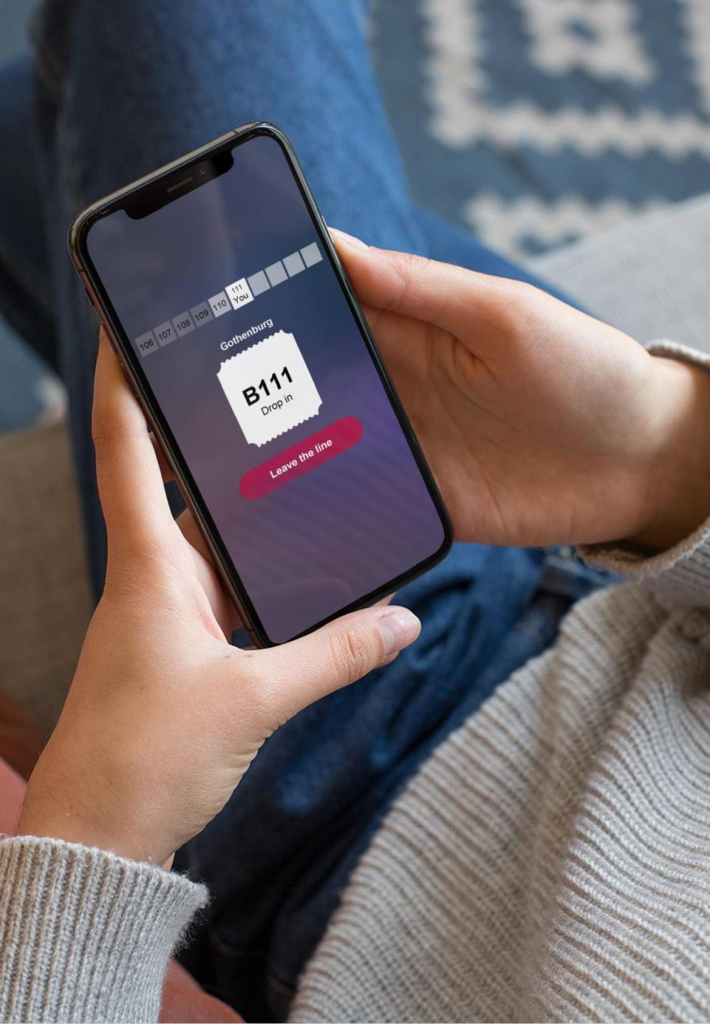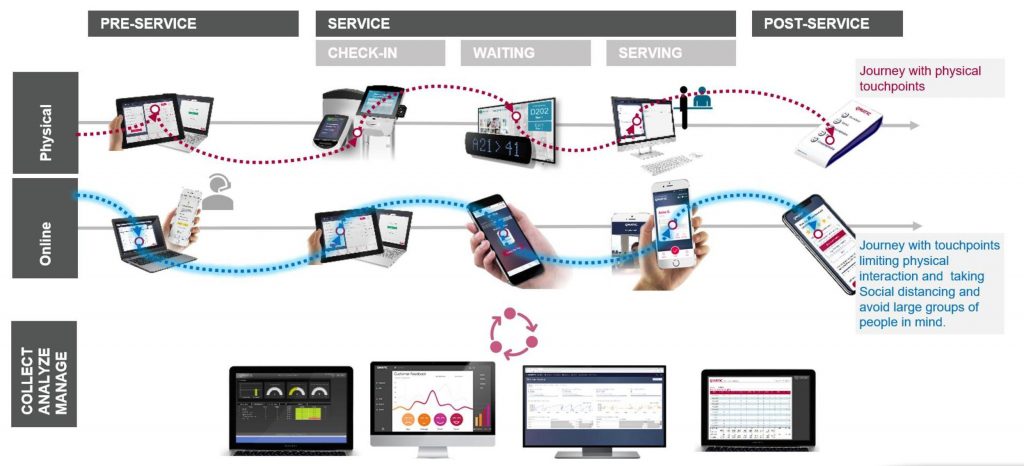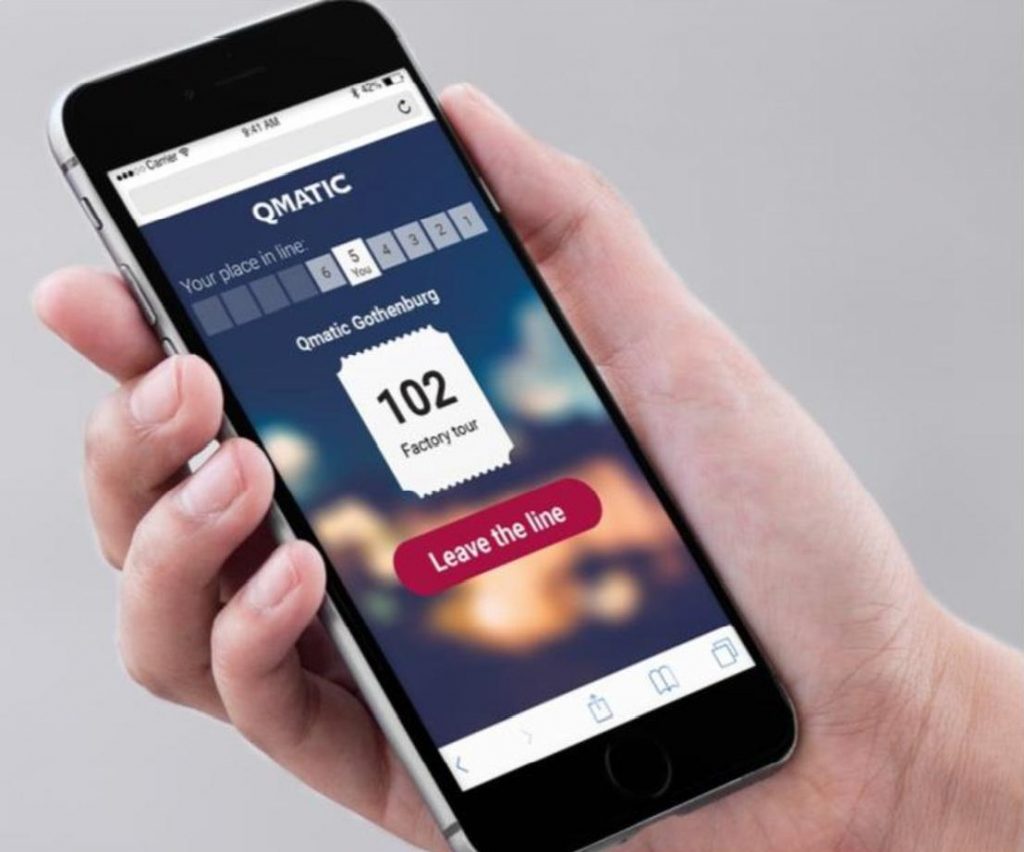Read More Below or Download the White Paper PDF

Introduction
The purpose of this presentation is to give you a general understanding of virtual queuing solutions and how it aids social distancing in this current situation. Hopefully, you can use some of these concepts to create a safer environment for both your customers and staff.
The following questions will be addressed:
What is virtual queuing?
How does virtual queuing work?
How can virtual queuing help create a safer environment?
Which touchpoints in the customer journey management can be
made virtual?
What are the best practices for implementing virtual queuing?
Note: Different organizations use different naming for their
target groups. Hospitals serve patients, the public sector serves
citizens, and businesses serve customers. For brevity, all target
groups are referred to as customers.
Challenges in the current situation
The current situation regarding COVID-19 poses challenges for service providers. Governments around the world have
encouraged citizens to practice social distancing and imposed restrictions with varying degrees of stringency to tackle the situation.
Some service providers remain open to provide essential
services for citizens (hospitals, pharmacies, and grocery stores for example). At the same time, many countries have put in place restrictions on the maximum number of people allowed in a space at any one time.
We’ve seen pictures with long queues outside pharmacies and retail stores as soon as these restrictions started. The question is, how can service providers provide safer environment for customers and staff, while also striving to deliver excellent services and comfort for all?

What is virtual queuing?
Virtual queuing is a practice where customers don’t have to physically wait in line to get a service. In virtual queuing, a system is used to place customers in a virtual queue.
The virtual queue is invisible in the sense that customers are not confined to any waiting spot, so they don’t know what position they have in the queue relative to others. The customer’s place in the virtual queue is secured by an identifier like a printed ticket or managed through their mobile phone as an SMS, mobile ticket or queuing app. The identifier is often given upon arrival but can be provided in advance when booking an appointment. Because the place in the queue is secured, there is no need for a physical waiting line.


How can virtual queuing solutions aid social distancing?
Virtual queuing is about managing customer journeys in the digital space, so they have minimal close interactions with either staff or fellow customers.
A few ways virtual queuing solutions can help with social distancing:
- Regulating the number of people visiting your premises
- Keeping close interactions to a minimum
- Reducing the time customers have to spend on-site
- Managing customer flow
An overview of the physical touchpoints in a customer journey
In the traditional queuing situations, this is what the physical touchpoints look like:
1. Pre-service
Customers arrive in the building.
2. Kiosk check-in
Upon arrival, customers check in through a self-service kiosk and get their tickets.
3. Waiting on premise
Customers wait for service in the waiting room, and get information from digital or LED display
4. Serving at a close distance
Staff members serve customers, usually in close distance.
5. Post-service: Feedback kiosk
Customers give feedback through selecting an icon which represents their overall impression of the service.
A customer journey overview: physical vs online
In this chart, you can see how virtual queuing solutions can move the customer journey from physical towards online.


Which touchpoints can be made virtual?
Pre-Service

Service



Post-Service

Appointment booking - online
Appointment booking is the simplest way to make sure your customers don’t need to queue. With appointment booking, customers can schedule their arrival close to their appointment time, which can considerably reduce their waiting time and prevent crowding in your waiting room. This will also reduce or even eliminate walk-ins and unexpected crowds. Provide online appointment booking on your website, or alternatively, open a call center where a designated staff member can book appointments for customers.


Check-in – virtual/remote
Customers with booked appointments
The benefit of having a booked appointment is that customers don’t need to queue, as they can schedule their arrival to be close to their appointment time.
For check in, they can scan the QR code in the appointment confirmation. Alternatively, you can also assign a staff member as a concierge to help with the check-in.
Walk-in customers
In a physical queue, a walk-in customer checks in through a self-service kiosk when they arrive at the premises. This process can be made virtual by providing a QR code that the customer can scan to get into the virtual queue, either online or at a distance from the premise (on the door or window, for example) to minimize close interaction.
Once the customer has scanned the QR code, they can select the service they need on their mobile phone. They will then be put in the virtual queue, with a mobile ticket so they can monitor their place in the queue. There is no need for them to get into the waiting area at all.
Alternatively, customers can call in to ask staff to check them into a queue. A concierge can also be assigned to greet and check in walk-in customers. Customers who check in with the help of staff member will receive SMS with a link to mobile ticket.
Waiting - remote
With a mobile ticket on their phone, customers don’t need to wait on your premise. As they can monitor their place in the queue, they can wait in the car, at home, or anywhere outside your waiting area.
You can also keep them notified through SMS, so they know when to make their way to the premise. If possible, provide notifications on details such as the number of open counters, services offered, current waiting and transaction times.

Serving - at a distance
With virtual solutions, customers will be informed when it’s their turn, and where they should go to (top image).
Each serving staff member can be equipped with a gadget to call customers and use it as a display to show which customers they call (bottom image), with a reminder for customers not to go closer than 2 meters. This way, both staff members and customers can still practice social distancing and while still giving/receiving the services.
Customer feedback - online
The last touchpoint, customer feedback, can be entirely made virtual. In a physical customer journey, there’s often a feedback kiosk with various buttons ranging from very satisfied to not satisfied, usually around the exit.
Instead of this, provide an online questionnaire that customers can respond to when the visit is completed. You can also design conditional follow-up questions that depend on the previous answer.


Managing virtual queing
with intelligence tools & data analysis
Behind the scenes, there are essential parts to making sure a virtual queuing experience for customers is seamless: performance monitoring and data analysis.
With virtual queuing, it’s hard to tell at a glance how many people are waiting in the queue. Intelligence tools like Operations Panel provides this data for managers, along with the number of open counters and staff availability, all of which are useful for resource allocation.
Finally, analyze the performance reports to see if the whole operation runs smoothly. Are waiting times acceptable and does the staff allocation work well Make sure you monitor regularly so you can identify problems or bottlenecks, and improve your customers’ experiences.
Which service providers can benefit from a virtual queuing system?
In the current situation, some service providers must remain open. These are some examples of where a virtual queuing system can be of a huge help in reducing infection risk and create a safer environment for customers and staff.
1. Public sector
Government offices and services that need to stay open.
2. Healthcare
Hospitals, clinics, and other healthcare facilities.
3. Retail
Grocery stores, pharmacies, other essential business stores.
4. Banking and Finance
A seamless and personal journey through every channel.
Tips for implementing virtual queuing
Optimize appointment booking
Encourage customers to book appointments so you can estimate the expected number of customers for the day and plan ahead.
Segment customers on their bookings
If you provide different types of services, segment customers in different queues if appropriate, rather than entering all customers in the same line.
Manage customer flow
Control the number of visitors by managing the appointment slots you have available or creating a different set of calling rules to decrease the number of people waiting.
Plan staff allocation
With most (if not all) appointments booked in advance, plan resource allocation to get a balanced and controlled waiting period.
Keep customers informed
Use email and/or SMS notifications to keep customers updated with booking confirmations, reminders, expected waiting times, or any changes.
Reports and follow up
Analyze the data of the waiting and service times, the number of waiting customers, and customers’ satisfaction to improve the service performance.
